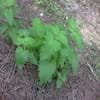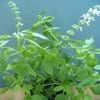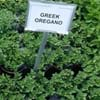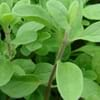Life Span
Perennial
Perennial
Origin
Europe, Asia
Mexico, Central America, South America
Types
Not Available
-9999
Habitat
Dry areas, Roadsides, stream banks, Stream side, Waste areas
Coastal Regions
USDA Hardiness Zone
3-7
11-15
Sunset Zone
1a, 1b, 2a, 2b, 3a, 3b, 4, 5, 6, 7, 8, 9, 10, 11, 12, 13, 14, 15, 16, 17, 18, 19, 20, 21, 22, 23, 24
A1, A2, A3, H1, H2, 1a, 1b, 2a, 2b, 3a, 3b, 4, 5, 6, 7, 8, 9, 10, 11, 12, 13, 14, 15, 16, 17, 18, 19, 20, 21, 22, 23, 24
Habit
Clump-Forming
Upright/Erect
Flower Color
White, Lavender
Yellow
Flower Color Modifier
Bicolor
Bicolor
Fruit Color
Sandy Brown
Red
Leaf Color in Spring
Gray Green, Gray
Green, Dark Green
Leaf Color in Summer
Gray Green, Gray
Green, Dark Green
Leaf Color in Fall
Gray Green, Gray
Green, Dark Green
Leaf Color in Winter
Light Green
Green, Dark Green
Leaf Shape
Arrowhead
Ovate
Plant Season
Spring, Summer, Fall
Spring, Summer, Fall
Sunlight
Full Sun, Partial Sun
Full Sun
Type of Soil
Clay, Loam, Sand
Loam, Sand
The pH of Soil
Acidic, Neutral, Alkaline
Neutral
Soil Drainage
Well drained
Well drained
Bloom Time
Summer, Late Summer, Early Fall
Indeterminate
Tolerances
Drought, Dry soil
Drought
Where to Plant?
Container, Ground
Container, Ground
How to Plant?
Seedlings
Grafting, Seedlings
Plant Maintenance
Low
Medium
Watering Requirements
Do Not over Water, Never Over-water, Requires regular watering, Water when soil is dry
Needs more water during establishment
In Summer
Lots of watering
Lots of watering
In Spring
Moderate
Moderate
In Winter
Average Water
Average Water
Soil pH
Acidic, Neutral, Alkaline
Neutral
Soil Type
Clay, Loam, Sand
Loam, Sand
Soil Drainage Capacity
Well drained
Well drained
Sun Exposure
Full Sun, Partial Sun
Full Sun
Pruning
Prune if you want to improve plant shape, Prune in spring, Remove damaged leaves, Remove dead leaves
Pinch or prune as they grow to promote branching and bushiness
Fertilizers
fertilize every 2-3 weeks while growing, fertilize in growing season
14-14-14 Fertilizer, Compost
Pests and Diseases
Caterpillars, Leaf Hoppers, Nematodes, Spider mites
Anthracnose, Aphids, Red blotch, Rust
Plant Tolerance
Drought, Frost
Heat Tolerance, Salt and Soil Compaction
Flower Petal Number
Single
Single
Fragrant Bark/Stem
Yes
Yes
Foliage Texture
Medium
Medium
Foliage Sheen
Matte
Matte
Attracts
Flying insects, Insects, Spider Mites
Aphids, Not Available, Squirrels
Allergy
Avoid during Pregnancy, Headache, Stomach pain, Vomiting
Stomach pain, Vomiting
Aesthetic Uses
Beautification, Landscape Designing, Showy Purposes
Used in parkland
Beauty Benefits
Not Available
Anti-ageing, Blackheads, Reduce Bruises
Environmental Uses
Air purification
Shadow Tree, Soil protection
Medicinal Uses
Arthritis, Cold, constipation, Fever, Insomia, Migraines, Upset stomach
Dehydration, Diabetes, Diarrhea, Nutrients, Weight loss
Part of Plant Used
Whole plant
Fruits
Other Uses
Air freshner, Decoration Purposes, Employed in herbal medicine, Making Perfumes, Making Shampoo, Making Sweet Scented Oil, Medicinal oil, Used as Ornamental plant, Used for its medicinal properties
Application in Handicrafts, Food for animals, Showy Purposes
Used As Indoor Plant
Yes
No
Used As Outdoor Plant
Yes
Yes
Garden Design
Container, Herb / Vegetable, Mixed Border
Edible, Herb, Vegetable
Botanical Name
NEPETA cataria
Manilkara zapota
Common Name
Cat Nip, Catnip
sapodilla , chikoo, Sapota
In German
Katzenminze
Breiapfelbaum
In French
cataire
Sapotillier
In Greek
Είδος δυόσμου
sapodilla
In Portuguese
catnip
sapodilla
In Polish
Kocimiętka
Pigwica właściwa, sapodilla
In Latin
catnip
sapodilla
Phylum
Magnoliophyta
Magnoliophyta
Class
Magnoliopsida
Magnoliopsida
Family
Lamiaceae
Sapotaceae
Clade
Angiosperms, Asterids, Eudicots
Angiosperms, Asterids, Eudicots
Subfamily
Nepetoideae
Sapotoideae
Season and Care of Catnip and Sapodilla
Season and care of Catnip and Sapodilla is important to know. While considering everything about Catnip and Sapodilla Care, growing season is an essential factor. Catnip season is Spring, Summer and Fall and Sapodilla season is Spring, Summer and Fall. The type of soil for Catnip is Clay, Loam, Sand and for Sapodilla is Loam, Sand while the PH of soil for Catnip is Acidic, Neutral, Alkaline and for Sapodilla is Neutral.
Catnip and Sapodilla Physical Information
Catnip and Sapodilla physical information is very important for comparison. Catnip height is 980.00 cm and width 60.00 cm whereas Sapodilla height is 150.00 cm and width 60.00 cm. The color specification of Catnip and Sapodilla are as follows:
Catnip flower color: White and Lavender
Catnip leaf color: Gray Green and Gray
Sapodilla flower color: Yellow
- Sapodilla leaf color: Green and Dark Green
Care of Catnip and Sapodilla
Care of Catnip and Sapodilla include pruning, fertilizers, watering etc. Catnip pruning is done Prune if you want to improve plant shape, Prune in spring, Remove damaged leaves and Remove dead leaves and Sapodilla pruning is done Pinch or prune as they grow to promote branching and bushiness. In summer Catnip needs Lots of watering and in winter, it needs Average Water. Whereas, in summer Sapodilla needs Lots of watering and in winter, it needs Average Water.





